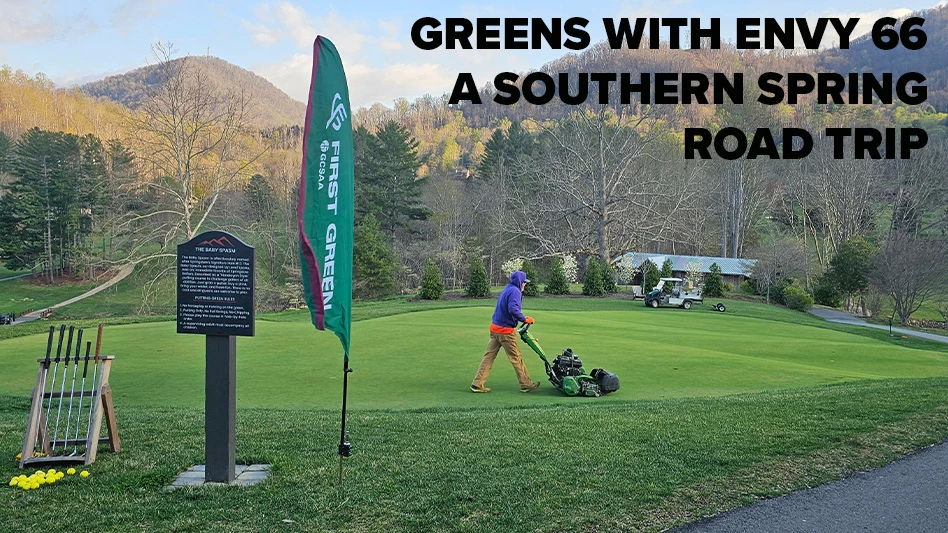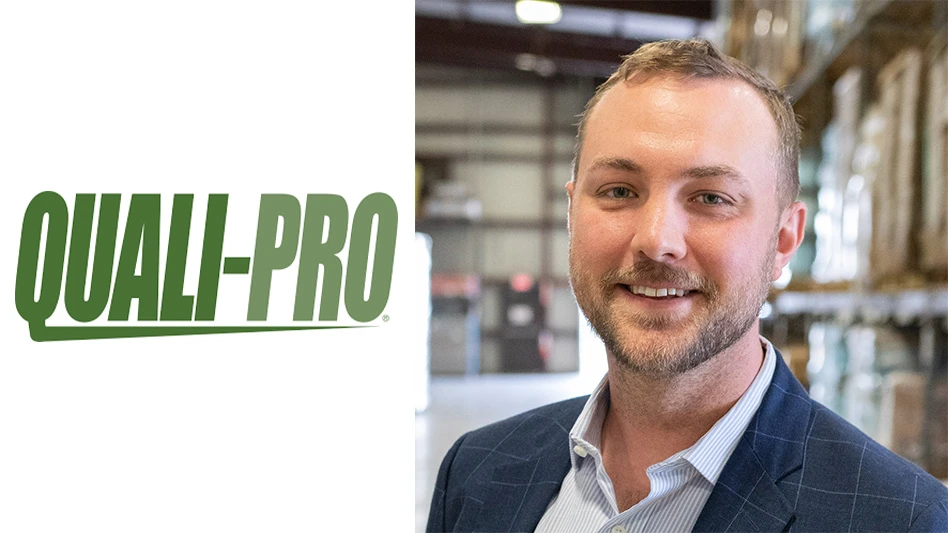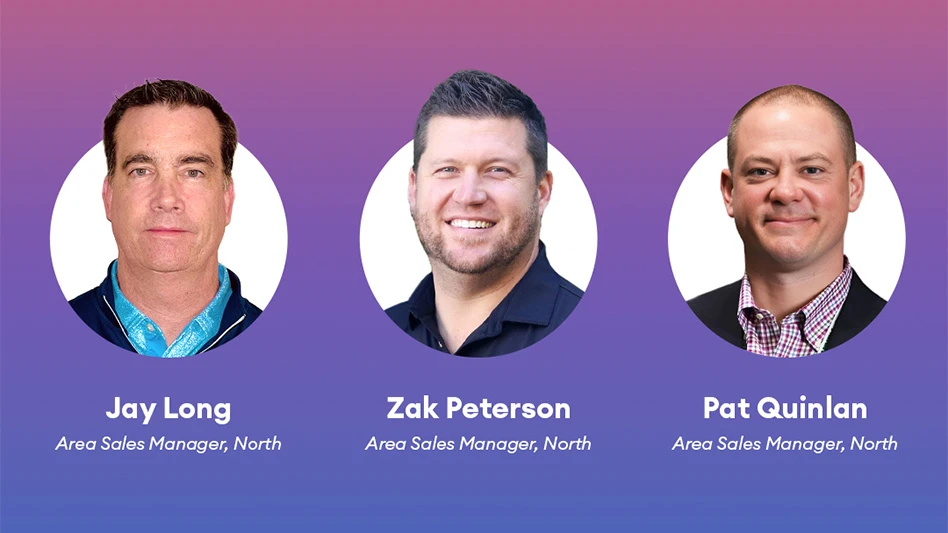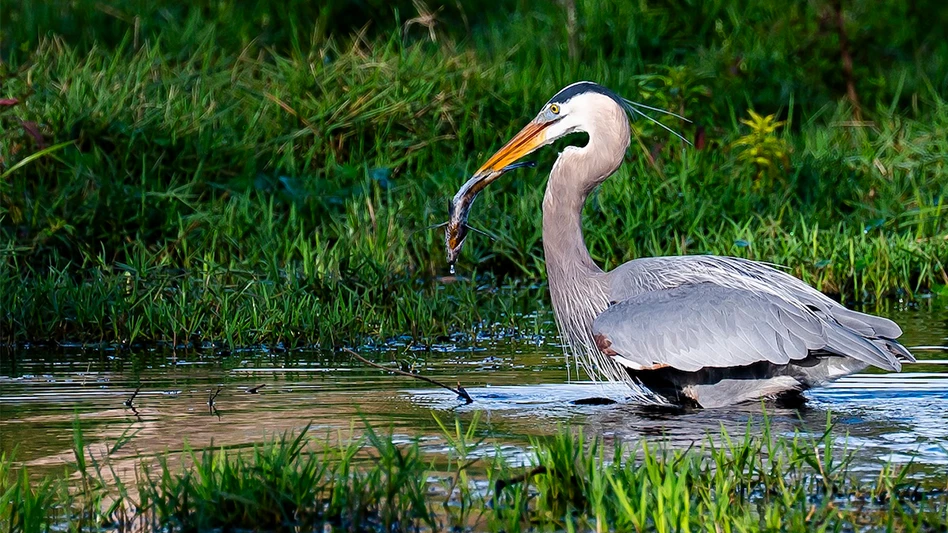
Luke Bennett
While living on one of Hawaii’s eight main islands may sound like a dream for most, maintaining golf courses in the Aloha State carries many challenges.
For Kohanaiki director of golf course maintenance and grounds Luke Bennett, maintaining the greens on The Big Island has proved difficult due to the location and climate.
Kohanaiki is home to an 18-hole course, with six of those 18 holes on the oceanside. It also offers a private country club and residential community.
Starting in April 2023, Bennett and his team took on the project of building their own sod farm on the course, to grow seashore paspalum to replace Bermudagrass infestation on greens.
Bermudagrass is used by many golf courses worldwide, being one of the most popular playing surfaces. But it can also grow as a weed, as it has for Kohanaiki.
Seashore paspalum has a higher salt tolerance than other turf options, making it a solid choice for Kohanaiki, Bennett says. It has been known to be a good option for courses in tropical climates with fast-growing turf.
“I wouldn't say it's the best playing surface for our membership,” Bennett says. “There's a lot of choices out there, but it's the appropriate turf choice for the water quality that we have and it's the appropriate turf choice for how close we are to the ocean. And it is a very popular turf type in Hawaii and other tropical areas for those reasons, and it primarily revolves around water quality. It is still a fantastic turf. However, if we were in a different location, paspalum would not be the turf of choice.”
Located between the first and fourth hole, the sod farm has successfully grown paspalum to replace the Bermudagrass on two holes. Bennett says the project is about halfway done and will continue until resources run out.
While most golf courses looking to replace Bermudagrass will hire the job to outside sources, Bennett and his team face the difficulty of living on an island with limited access to resources for sod farms and the necessities involved in the project. For cost efficiency, they took the job upon themselves.
“Being in Hawaii poses some challenges,” Bennett says. “Typically, we would go out and we would contract all this work out. Southern Turf, our grower, does have a sod farm here on the island but it is a very small acreage, and we needed a large amount of acreage. So, we had to go out and find the ground.”
The sod farm's location onsite has proved to have environmental benefits for Kohanaiki. The course prides itself on being a silver certified Audubon sanctuary golf course. “Everything that we do here at Kohanaiki is very thoughtful, and we do it in a manner that is responsible for all aspects of the environment,” Bennett says.
Removing Bermudagrass reduces the use of pesticides, fertilizers and other chemicals that could impact the environment.
“It's kind of a restoration project,” Bennett says. “Golf courses restore themselves all the time. And when you do restore them, it puts everything back in place that allows you to move forward as intended, which is just more efficient in terms of environmental impact.”
While the project has produced many benefits, it also has encountered challenges.
To grow a successful sod farm, a new irrigation system needed to be installed, adjusted and modified on multiple occasions. Bennett says new challenges arose in each step of the project, but the biggest issue has proven to be the weather.
The sod farm is grown on plastic, meaning one bad rain could send them back to the beginning.
“So there really is no soil and there is just a tremendous amount of risk involved with doing that,” Bennett says, “So when we are propagating the turf, if there's a heavy rain event, it could wash everything out, we have to start over.”
Bennett does not recommend golf course maintenance crews take on a project like this themselves. He recommends contracting the project to outside companies if the necessary funding is available.
“Don't do it in-house,” Bennett says. “This is not something that we did for cost savings. This is not something that we did for fun. We 100 percent would have contracted out this work. ... 100 percent. We would have hired a grower to grow the sod somewhere off property and have them deliver it to us when we were ready for it, and we would also hire a construction company to install the sod.
“It is just being in this location, not having the sod grow or being able to produce the amount of sod that we needed, and then not having a local contract company that could work within timeline at a reasonable price sort of forces down the avenue of doing it in house. So, for large regrassing projects, you are better off contracting the work out and letting your team handle what they are supposed to do, which is the maintenance of the grass, not necessarily the construction and restoration work.”
But if you do decide to grow a sod farm yourself, Bennett credits a skilled staff for success. “It's all about staff,” he says. With eight salaried managers beneath him, Bennett has a talented staff to assist with the project. “I learned that I'm surrounded by the best people in the industry,” he adds. “We could not have done this with the full team effort of all of my managers as well as some of the executives here.”
Kelsie Horner is a Kent State University senior participating in Golf Course Industry’s summer internship program.
Latest from Golf Course Industry
- From the publisher’s pen: Technology diffusion and turf
- Applications open for 2025 Syngenta Business Institute
- Smart Greens Episode 1: Welcome to the digital agronomy era
- PBI-Gordon promotes Jeff Marvin
- USGA investing $1 million into Western Pennsylvania public golf
- KemperSports taps new strategy EVP
- Audubon International marks Earth Day in growth mode
- Editor’s notebook: Do your part





